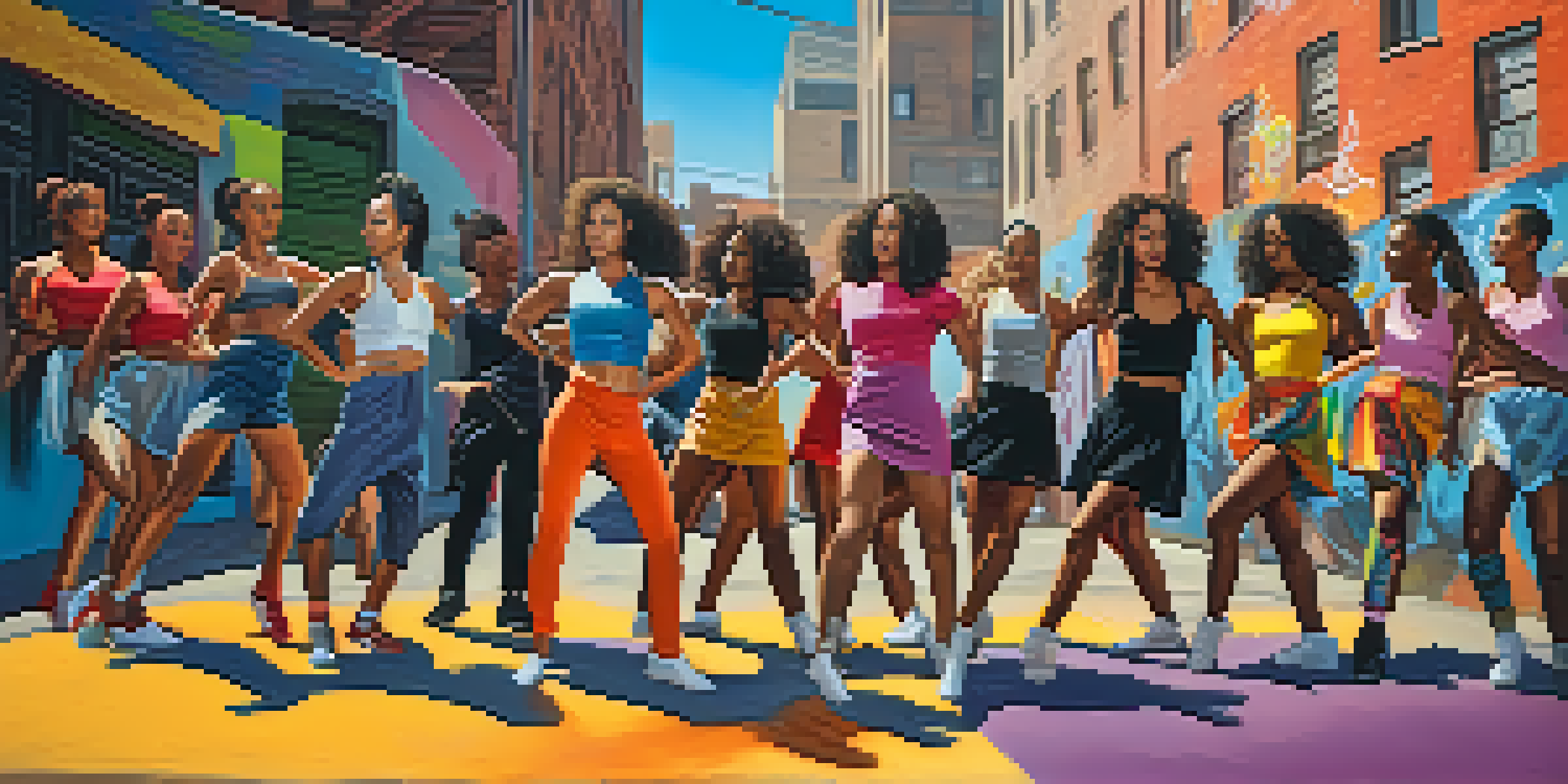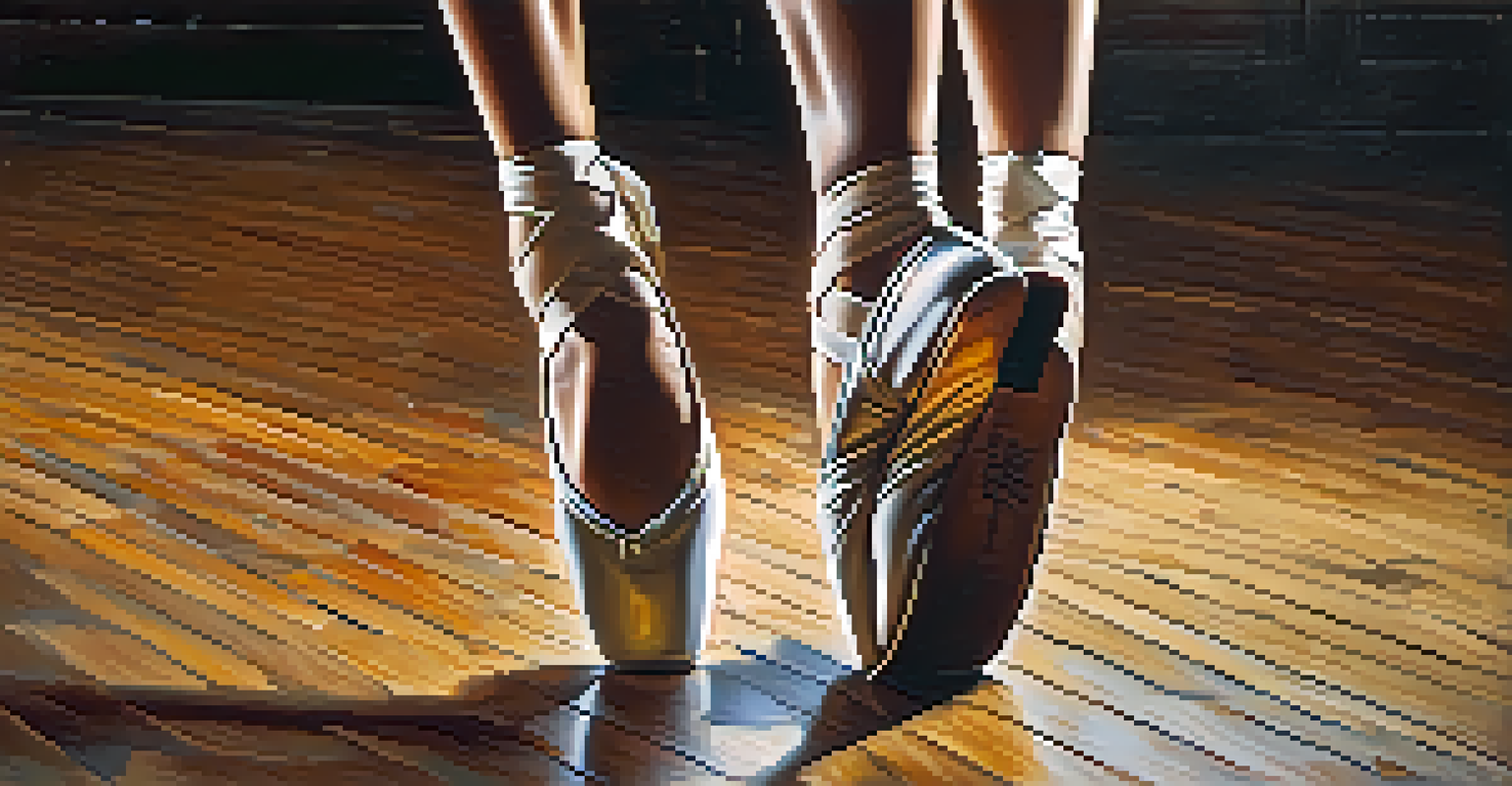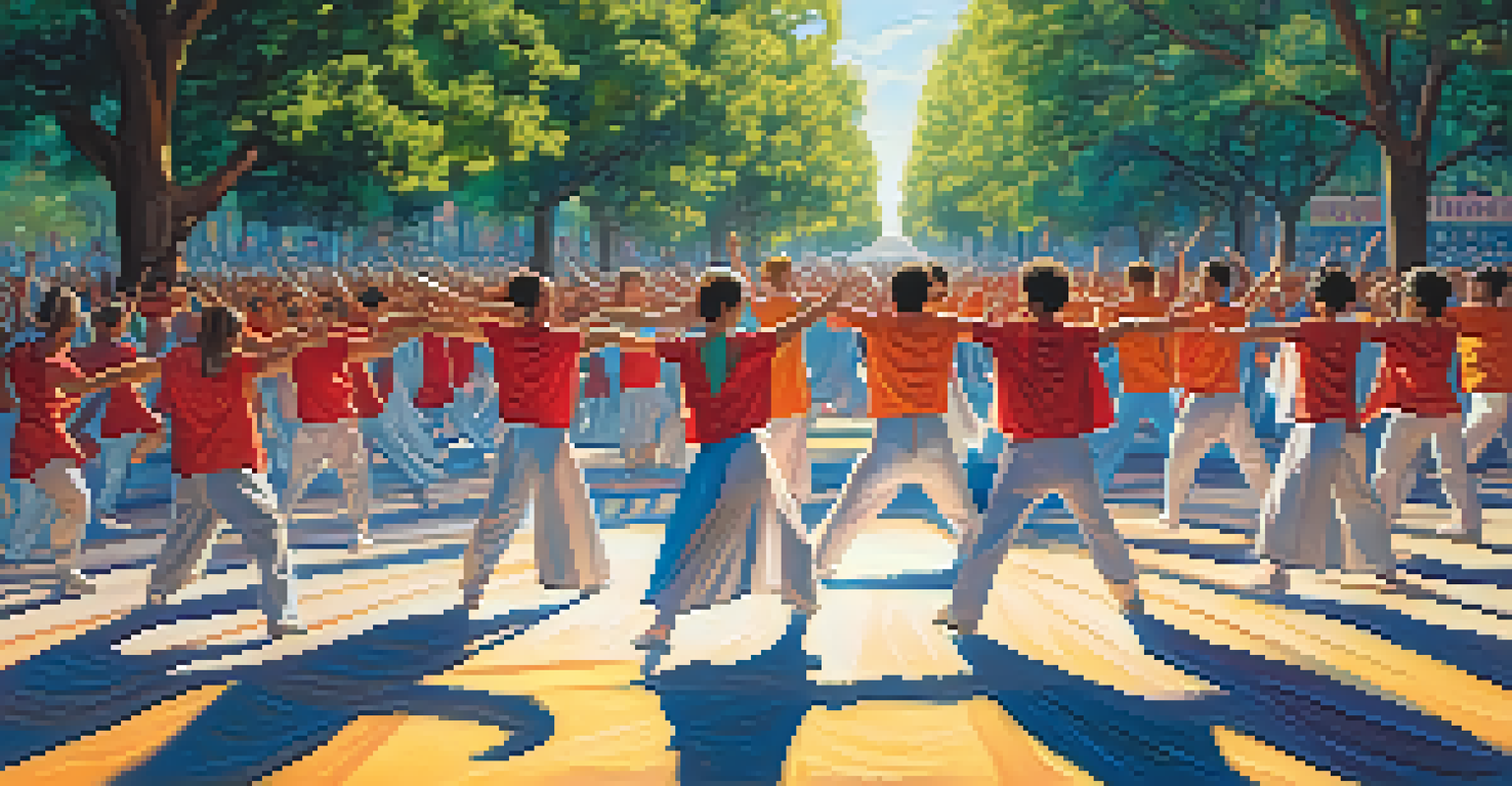Dance as Protest: Social Commentary in Film Choreography

The Powerful Intersection of Dance and Social Commentary
Dance has long been a medium for expression, and when combined with film, it becomes a powerful tool for social commentary. Through movement, dancers convey emotions and messages that words often fail to express. This unique intersection allows filmmakers to explore complex societal issues in a visceral and impactful way, making the audience feel rather than just think.
Dance is the hidden language of the soul.
In essence, dance can serve as a mirror reflecting societal woes, injustices, and triumphs. For example, films like 'Step Up' and 'Black Swan' showcase how dance can symbolize personal struggles and societal pressures. The choreography in these films often tells a story that resonates with viewers, encouraging them to reflect on their own experiences within the larger social landscape.
By utilizing choreography as a form of protest, filmmakers engage audiences on multiple levels. This engagement not only entertains but also educates, sparking conversations about the pressing issues showcased in the dance sequences.
Historical Context: Dance as a Tool for Protest
Historically, dance has been used as a form of protest in various cultural movements. From the civil rights movement in the 1960s, where dance was a form of resistance, to contemporary movements advocating for social justice, the rhythm of the body can articulate what words may not. These historical examples illustrate that dance is more than just art; it’s a statement.

One notable instance is the use of dance in the Harlem Renaissance, where African American artists used performance to combat racial stereotypes and celebrate their culture. Similarly, films from this era often featured choreography that challenged social norms, pushing back against the status quo. This legacy continues today as modern filmmakers draw inspiration from these historical roots.
Dance as Social Commentary
Dance in film serves as a powerful medium for expressing complex societal issues, engaging audiences emotionally and encouraging reflection.
As we look at the evolution of dance in protest, it becomes clear that it is not a fleeting trend. Instead, it is a powerful tradition that highlights the resilience and creativity of those who seek to enact change, reminding us that every movement can have a purpose.
Modern Films that Utilize Dance as Protest
In recent years, several films have masterfully integrated dance into their narratives as a form of protest. Movies like 'Footloose' and 'Selma' showcase how dance can challenge social restrictions and advocate for freedom. These films highlight how choreography can encapsulate the struggles for rights and recognition, making the message both relevant and relatable.
The dance is a poem of which each movement is a word.
For instance, in 'Selma', the choreography during the march scenes serves to unite the characters and the audience, creating a powerful emotional resonance. The dance sequences are not just background entertainment; they are integral to the storyline, allowing viewers to feel the urgency and gravity of the protests depicted.
Moreover, contemporary dance films often incorporate themes of identity, intersectionality, and resistance against societal norms. This evolution of dance in film reflects a broader cultural shift towards embracing diverse voices and narratives, emphasizing that every story matters.
Choreography and the Emotion of Protest
Choreography in protest films often conveys deep emotions that resonate with audiences on a personal level. The movements, whether explosive or subtle, can evoke feelings of anger, hope, or defiance, serving as a catalyst for viewers to engage with the issues at hand. This emotional connection makes the social commentary even more impactful.
Dance allows for a physical expression of protest, transforming feelings of frustration into a collective, dynamic experience. For instance, the choreography in films like 'The Greatest Showman' illustrates the struggle for acceptance and the power of unity through powerful, synchronized movements. These moments invite viewers to reflect on their own emotions regarding societal injustices.
Historical Roots of Dance Protest
Dance has a rich history as a form of protest, from the civil rights movement to contemporary activism, demonstrating its role as a tool for change.
By merging choreography with emotional storytelling, filmmakers create a profound dialogue between the art of dance and the realities of social issues. This dialogue not only entertains but also empowers viewers to consider their roles in the larger fight for change.
The Role of Dance in Activism and Awareness
Dance in film often acts as a springboard for activism, raising awareness about social issues that demand attention. When audiences witness dance as a form of protest, it can inspire them to take action in their own lives. This ripple effect highlights the potential of art to mobilize communities and create change.
For example, films that depict dance as a response to oppression often encourage viewers to consider their roles in societal challenges. The vibrant choreography, paired with powerful narratives, fosters a sense of empathy and urgency. This connection can lead to increased activism, prompting individuals to support movements that resonate with them.
As we see dance becoming more central in films that address social issues, it underscores the importance of art in activism. The ability of dance to transcend language and cultural barriers makes it a universally understood form of protest, reinforcing that everyone can contribute to the conversation.
Cultural Significance of Dance in Film
The cultural significance of dance in film cannot be overstated, as it serves to preserve and celebrate diverse traditions. Through choreography, filmmakers can showcase unique cultural narratives, connecting audiences to histories and experiences that may be unfamiliar. This cultural representation is vital in fostering understanding and promoting inclusivity.
Moreover, dance in film can challenge stereotypes and break down barriers, allowing for a richer dialogue about identity and community. Films like 'In the Heights' incorporate cultural dance styles that reflect the vibrancy of their settings, inviting audiences to explore different cultural landscapes. This not only entertains but also educates viewers about the beauty of diversity.
Future of Dance in Activism
The integration of dance in protest films is evolving, with new filmmakers using choreography to highlight contemporary social struggles and inspire audiences.
As filmmakers continue to embrace dance as a storytelling medium, we can expect to see more diverse voices represented on screen. This evolution is essential for the growth of film as an art form that reflects the complexities of society and encourages cultural exchange.
The Future of Dance as Protest in Film
Looking ahead, the future of dance as protest in film appears bright, with a growing trend towards incorporating social issues in storytelling. As filmmakers become increasingly aware of the power of dance, we can expect to see more innovative choreography that speaks to contemporary struggles. The possibilities are endless as new voices emerge in the industry.
With platforms like social media amplifying the reach of dance, budding filmmakers can share their stories and perspectives more easily than ever before. This democratization of storytelling opens the door for diverse narratives that reflect the complexities of modern society. Audiences are eager for content that resonates with their experiences, making this an exciting time for dance in film.

Ultimately, the integration of dance in protest films will continue to inspire and mobilize audiences. As long as there are stories to tell and injustices to address, dance will remain a vital form of expression, encouraging us all to move for change.